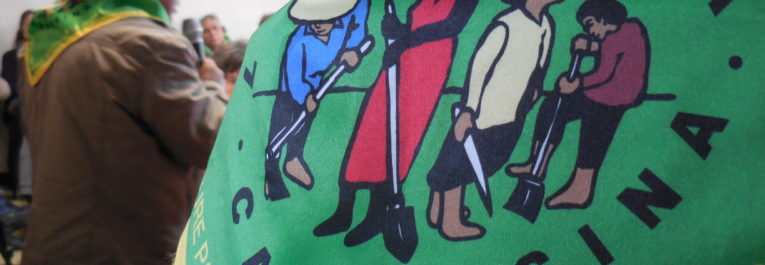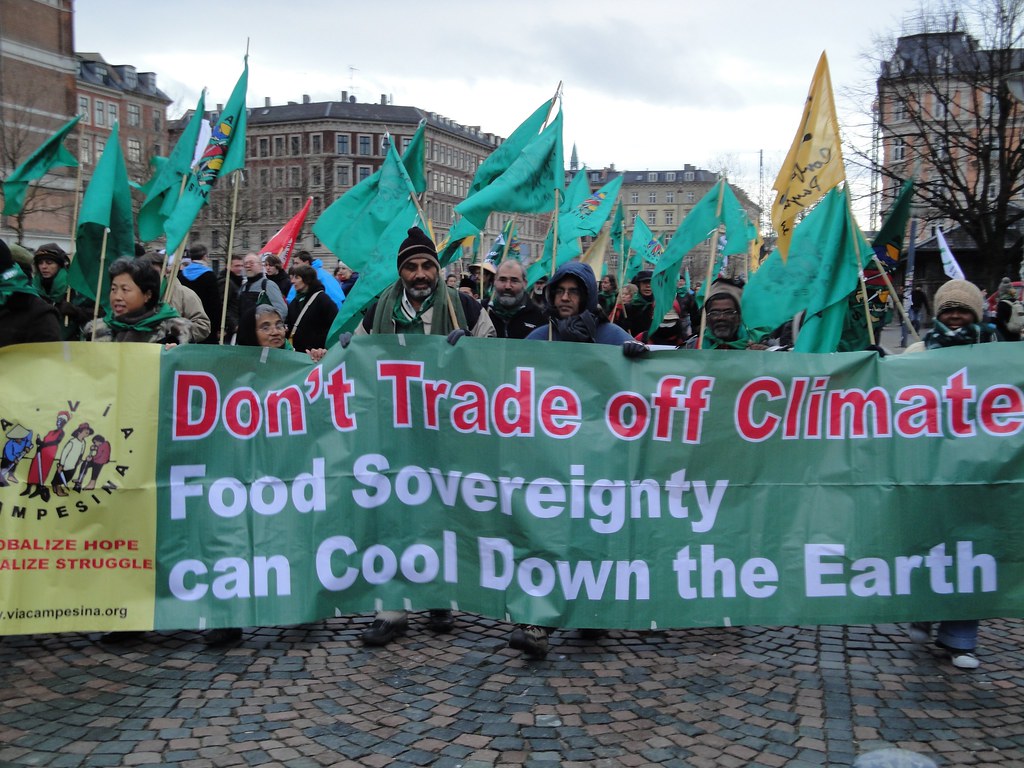The Climate Crisis and the Peasantry in South Asia

Through our protests, the peasant movements of South Asia have shown that we see a link between climate justice and food sovereignty. In 2014, South Asia’s peasant movements started a two-week the South Asian Climate Justice, Gender Justice, and Food Sovereignty Caravan to Kathmandu in Nepal. Our members from Nepal, Bangladesh, India, and Sri Lanka all came together to propose that the solution to climate change lies in supporting peasant agriculture, in opposition to the many false solutions that are being peddled by agribusiness and their affiliated ‘experts.’

We hold the technocratic and capitalist interventions in South Asia’s agriculture to be responsible for the agricultural crisis that exists across the region today. The story of peasant lands becoming parched by drought has become more and more common across the region. In India today, over 600 million people suffer to suffer from drought. Over 15,000 villages in the states of Karnataka and Maharastra have been left without water. Thousands of peasants have been forced to become climate migrants. The same story has continued to play out in the southern Sindh in Pakistan, which has suffered from almost a decade of drought and famine. In the high heat summer of 2019, thousands of Sindhi peasants took out a long march to demand attention towards the water crisis in the region. The monsoon season in much of the region was delayed once again. The glacial melt in the Himalayas threatens the future of food sovereignty not only in Pakistan and Nepal but the future of water supply across South Asia. In the last few weeks, more than two million people, including small peasants, have been displaced by a cyclone in West Bengal and Bangladesh. There is no doubt that the biggest affectees of climate change remain small peasant farmers.
The failure of technocratic and capitalist solutions to the problems of agrarian development in South Asia has become even more clear as the effects of climate change have come to the region. Glacial melting, saltwater inundation, cyclone damage, flooding, and drought have become a more severe phenomenon. The water scarcity has been made worse by the drying up of water tables, aided by the technical solution of tubewell irrigation that was sold by experts in the 1960s. Where the false solutions of the Green Revolution age have shown themselves to fail, South Asia faces a new invasion of experts and agribusiness offered more false solutions through the market, such as GMOs, oil-based fertilizers, biochar, agrofuels, carbon trading, building dams and ‘climate-smart’ technologies. All of these solutions come with adjoining loans and grants which open the agrarian market up to exploitative forms of capitalist actors.
The solution lies in rejecting the false solutions offered by technocrats and global agribusiness. Instead, we must strengthen peasant agriculture across South Asia. The solution lies in supporting the development of peasant agroecology as an alternative to techno and market-centric modes of agriculture. Today, it is South Asia’s peasantry that is ready to take on the dual challenge of food sovereignty and climate justice. Hundreds of thousands of peasants have marched on India’s capital city of Delhi in the last year to demand state interventions that support peasants, instead of commercial agriculture. It is the peasant movements of South Asia that are better equipped to solve the challenge of climate change in our region than anyone else. It is our voice that must be heard in the global discussion on how to combat climate change.
(This article first appeared on the LVC South Asia blog)
Also Read:
